The Article
110LP v2 Phono Amplifier From Moon
19th April 2019
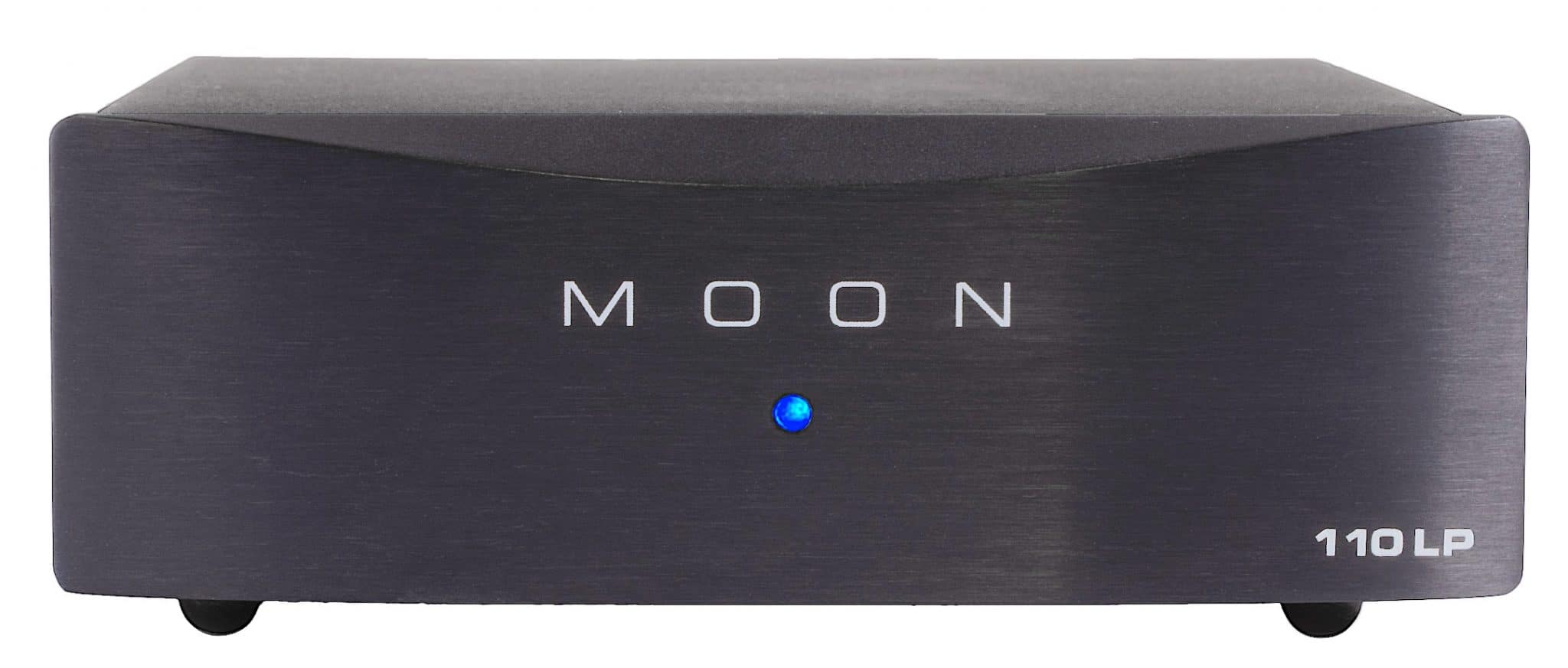
Compact and dinky it might be but Moon says that this little phono amplifier can punch above its weight (and size). Paul Rigby reviews the 110LP v2
Allow me to throw you a few stats to give you an idea of what you’re dealing with here. This is a little box spanning 127 x 42 x 165mm and weighing in at around 1.5kg. So this little phono amplifier is just the thing if you’re short on space. It’s also demure and shy in its general appearance. This low profile look will again appeal to many who don’t like their hi-fi to parade in front of them. Some hi-fi kit does a veritable calypso while wearing head feathers and a rainbow skirt. Not the 110. Low key. Low vis. Low height. Thats the Moon 110LP v2.
When you are matching your cartridge with this phono amplifier, you’ll be faced with banks of DIP switches underneath (see image below). Now look, I’ll tell you straight that I dislike DIP switches intensely. They are finicky, confusing and easy to configure incorrectly. That said, you are given a nice little pen-type piece of plastic called a DIPStick from Grayhill which assists with the switch moving and, in sonic terms at this price, DIP switching is best system available. Other solutions will either degrade the sound performance or demand a dramatic price hike. So, like me, you’re lumbered. The settings themselves are not too puzzling, to be honest but I found that I wasn’t sure – at least initially – where the switch was. The well lit image below, oddly enough, looks rather clearer than real life. Maybe when shadows loom in those recessed DIP switch pits then… That is, at first glance, it was tough to know where a switch was sitting: on the left or right. I got the hang of that pretty soon but I can imagine someone pushing to breaking point a DIP switch to the right which is already to the right because it looks like its on the left! Phew! If you catch my drift. Just don’t push too hard, the switches are not hard to move. If you’re pushing a switch to the right and it just won’t shift, it’s probably already there.
Those settings include impedance (i.e. 47kΩ, 475Ω,100Ω, 10Ω), capacitance loading (i.e. 0pF, 100pF,330pF, 430pF), gain (40dB, 50dB, 54dB, 60dB, 66dB) and a user selectable curve (IEC/RIAA).
The wall wart-powered aluminium chassis includes four-layer PCB tracings using pure copper and inductive DC filtering. It also features a socket for the 24V switch mode power supply, arrives in any colour you want as long as its black and comes with a 10-year warranty.
SOUND QUALITY
I began with a vinyl version of Nancy Wilson’s You’ve Got Your Troubles from the original Capitol/EMI pressing of A Touch of Today (1966). This album features a measure of compression so, while there’s plenty of detail on offer, the upper mids are pushed to the edge. This means that any hi-fi product that’s not perfectly neutral will push this recording into the bright zone and you’ll know about it pretty pronto.
As for the 110LP v2 in action? This box is as neutral as I’ve heard in a while from a relatively low cost phono amp. There was no hint of the 110 forcing the issue within the upper mid or treble zones. Instead, the Moon took its foot off the pedal and let the music do its thing.
Upper mids were not only balanced in terms of presentation, the low noise from the unit meant that the midrange was able to rope in more detail than I would have expected at this price point.
What I mean is that the reduction in noise increased the 3D effect of the soundstage so the music seemed to push backwards towards the rear wall of my listening room. As the soundstage moved backwards, the new space wasn’t just heard as an empty void, of course, it was filled by new detail. So, on one channel, a quite frantic acoustic guitar strum added finesse and delicacy to the sound of the strings. With some phono amps, that acoustic guitar could sound restricted and a little forced.
Let me elaborate. Imagine standing in a room, looking through a window and seeing a face on the other side squashed against the glass. Now, as you stare in horror and before you reach for your phone to call the Police, observe that face. Apart from the bent nose, the cheeks are flattened, the eyes look a little scary and the lips will be distorted. That’s the equivalent effect that some phono amps can produce if all they offer is a flat 2D soundstage.
The 110LP v2 gives, in effect, more room for details to manifest themselves. So, you’re back in your room with this odd looking person on the other side of the glass? Imagine that they slowly move backwards, the lips detach from the glass, the nose unbends, the eyes blink and the face slowly emerges, offers form, structure, new depth, more detail can be seen, new subtle aspects of the cheek bones are visible for the first time and, hey, they actually look quite attractive. I wonder if they’re free for dinner tonight…?
But enough shenanigans. Do you see how a 3D soundstage is actually important when appreciating delicate details?
I changed the music to a more dynamic and bass heavy master from rock outfit T2 and It’ll All Work Out in Boomland and the track, Morning. Again, the result was a balanced output with bass offering a wealth of information, transient detail, reverb response and more but doing it within the confines of the mix without booming and dominating or affecting the midrange. During the early part of this track I was impressed, during a high energy, rather noisy part of the sound, how the drums were kicking up a storm, the guitar was a beast of noise and yet the delicate cymbal taps were clearly evident with enough space in and around to offer their own reverb tails. The sense of order and discipline was high yet the naturalistic flow of the music was also important here. The detail on offer never appeared forced or false and plastic in any way.
CONCLUSION
The best compliment I can offer the Moon 110LP v2 is that I often found my attention drifting away from the review in hand and becoming lost in the music. Which is why this review took twice as long as it should have. Ten minutes would go by and then I’d suddenly click back into work mode, realising that I should be making notes at this point. The 110 is thus an involving piece of kit and one that integrates easily and efficiently into any balanced hi-fi system. Tonally, it is very impressive indeed with an organic clarity that is mightily impressive at this price point.
If you’re building a top-end budget analogue system and have a To Do shopping list? You don’t have to look to the heavens for guidance on the phono amplifier selection, just the Moon.
MOON 110 PHONO AMPLIFIER Price: £399 Tel: 0131 555 3922 Website: www.simaudio.com
GOOD: tonal balance, neutral presentation, midrange clarity, disciplined bass, value for money
BAD: nothing
RATING: 9
Don’t forget to check out my Facebook Group, The Audiophile Man: Hi-Fi & Music here: www.facebook.com/groups/theaudiophileman for exclusive postings, exclusive editorial and more!]
REFERENCE
Pro-Ject RPM3 turntable
Spendor A1 speakers
Black Rhodium cables
Blue Horizon Professional Rack System
Harmonic Resolution Systems Noise Reduction Components
All vinyl was cleaned using an Audio Desk’s Ultrasonic Pro Vinyl Cleaner

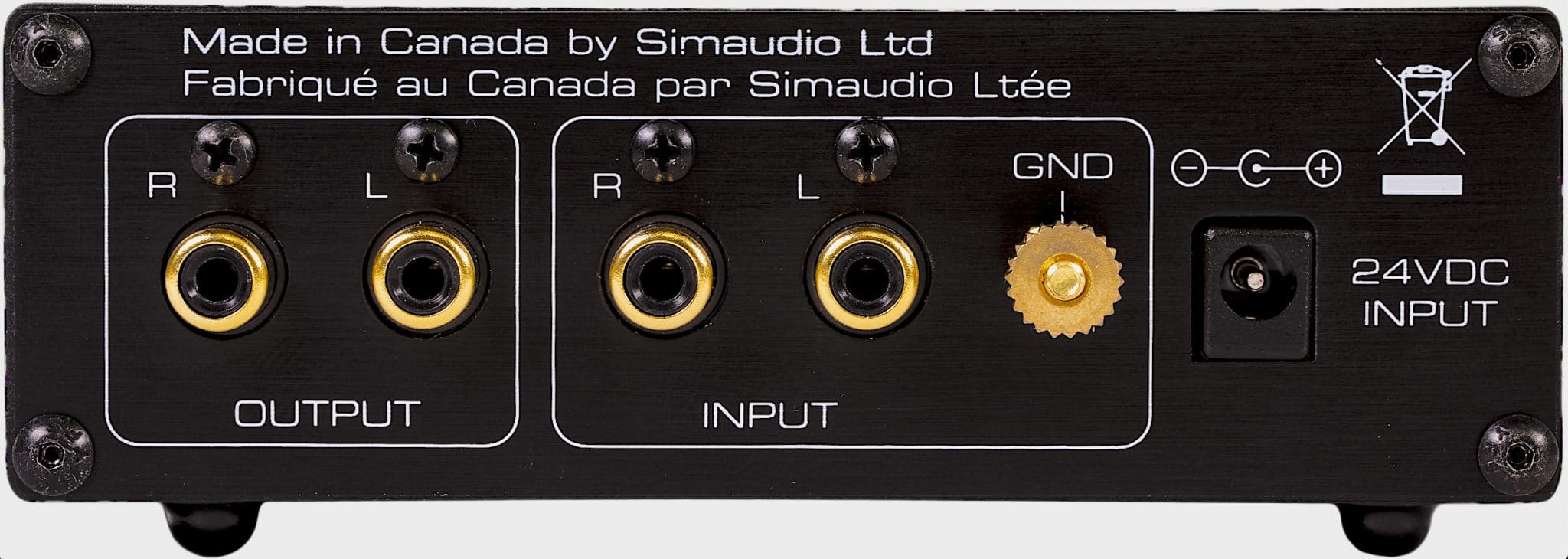
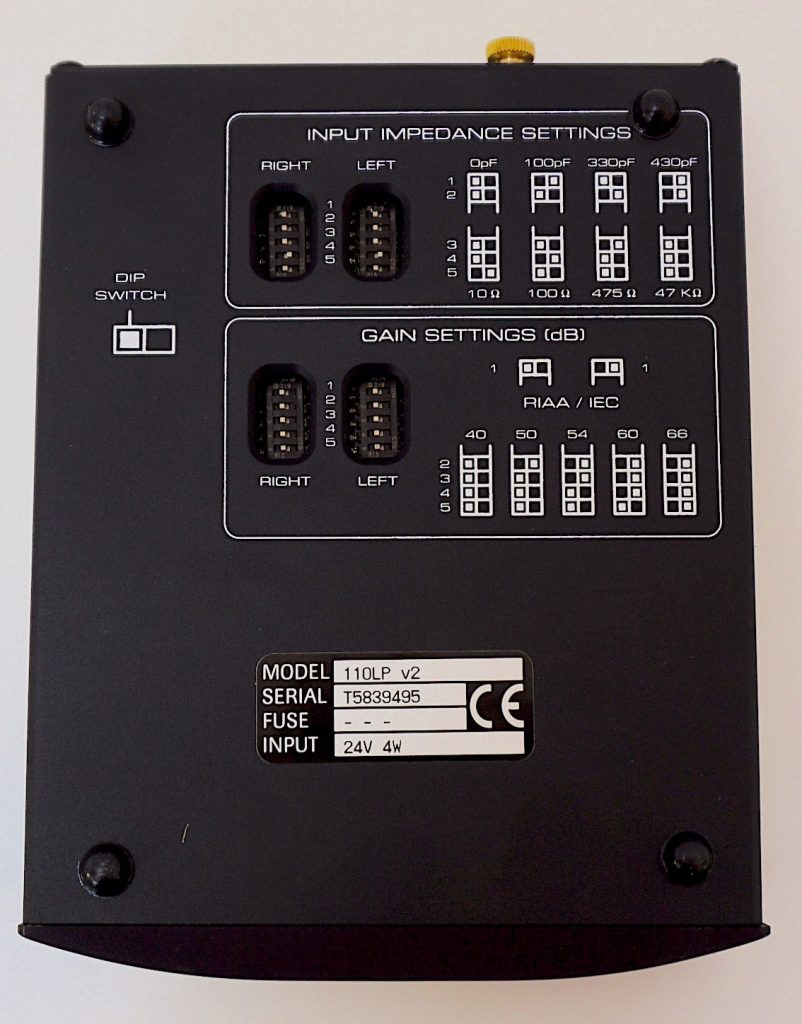
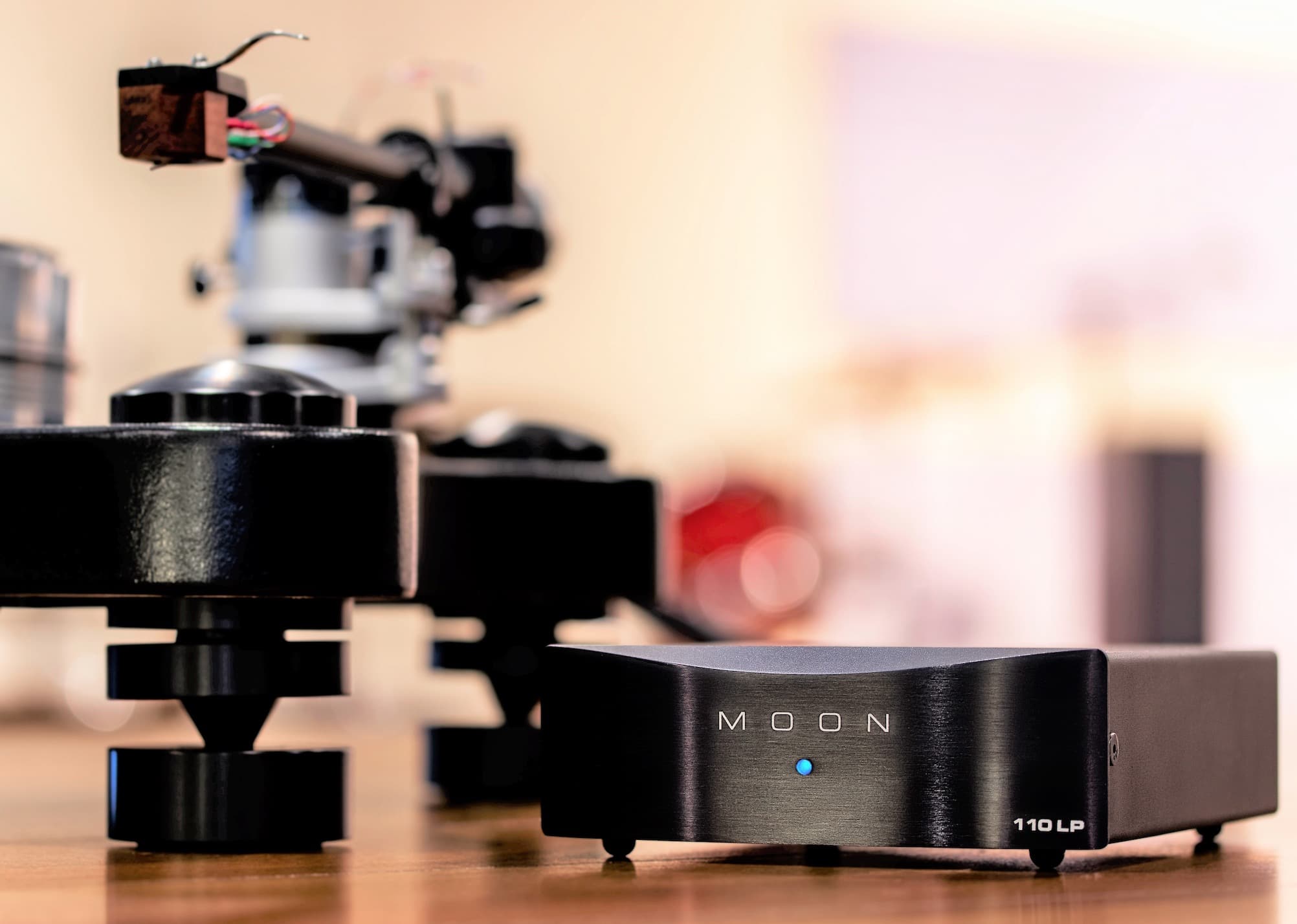
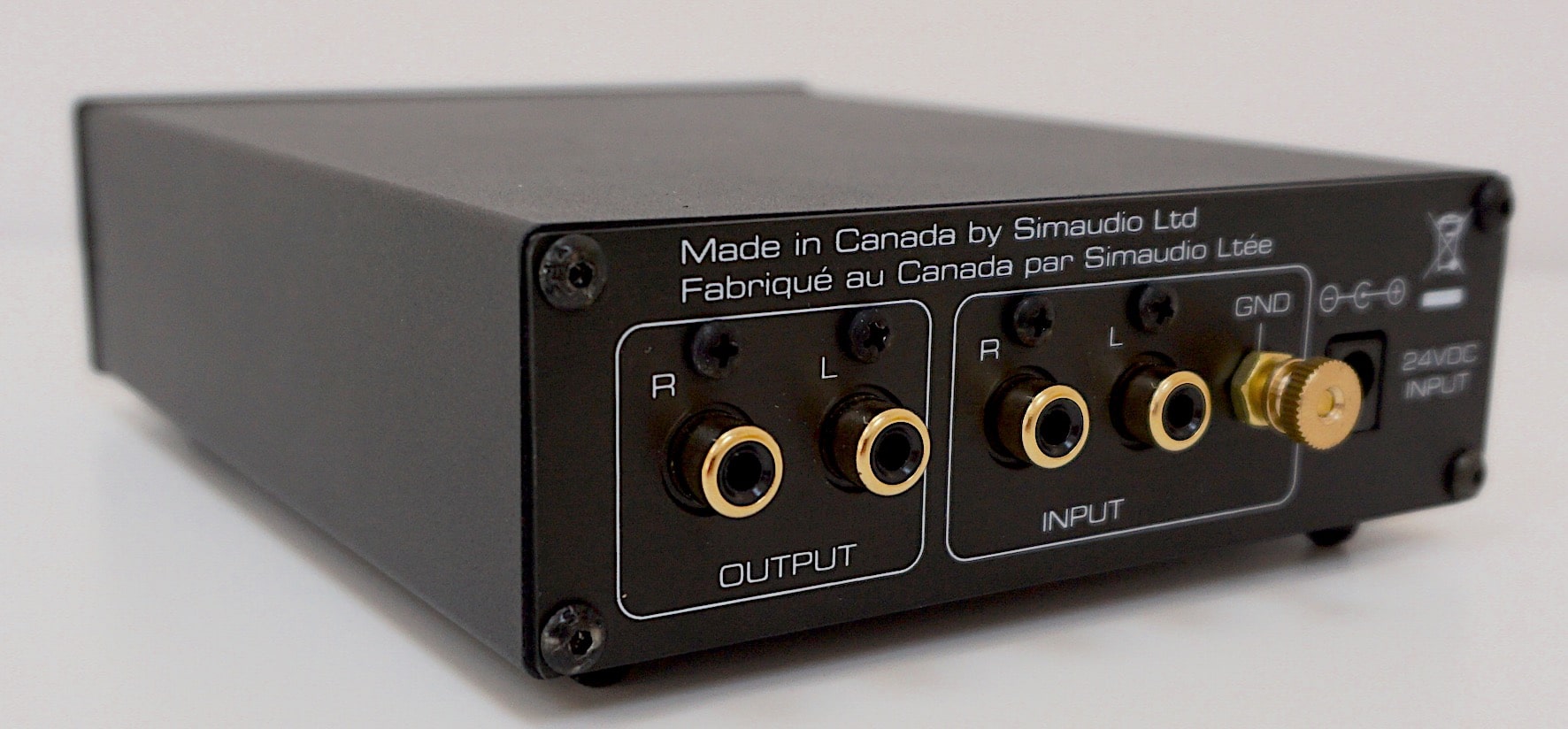
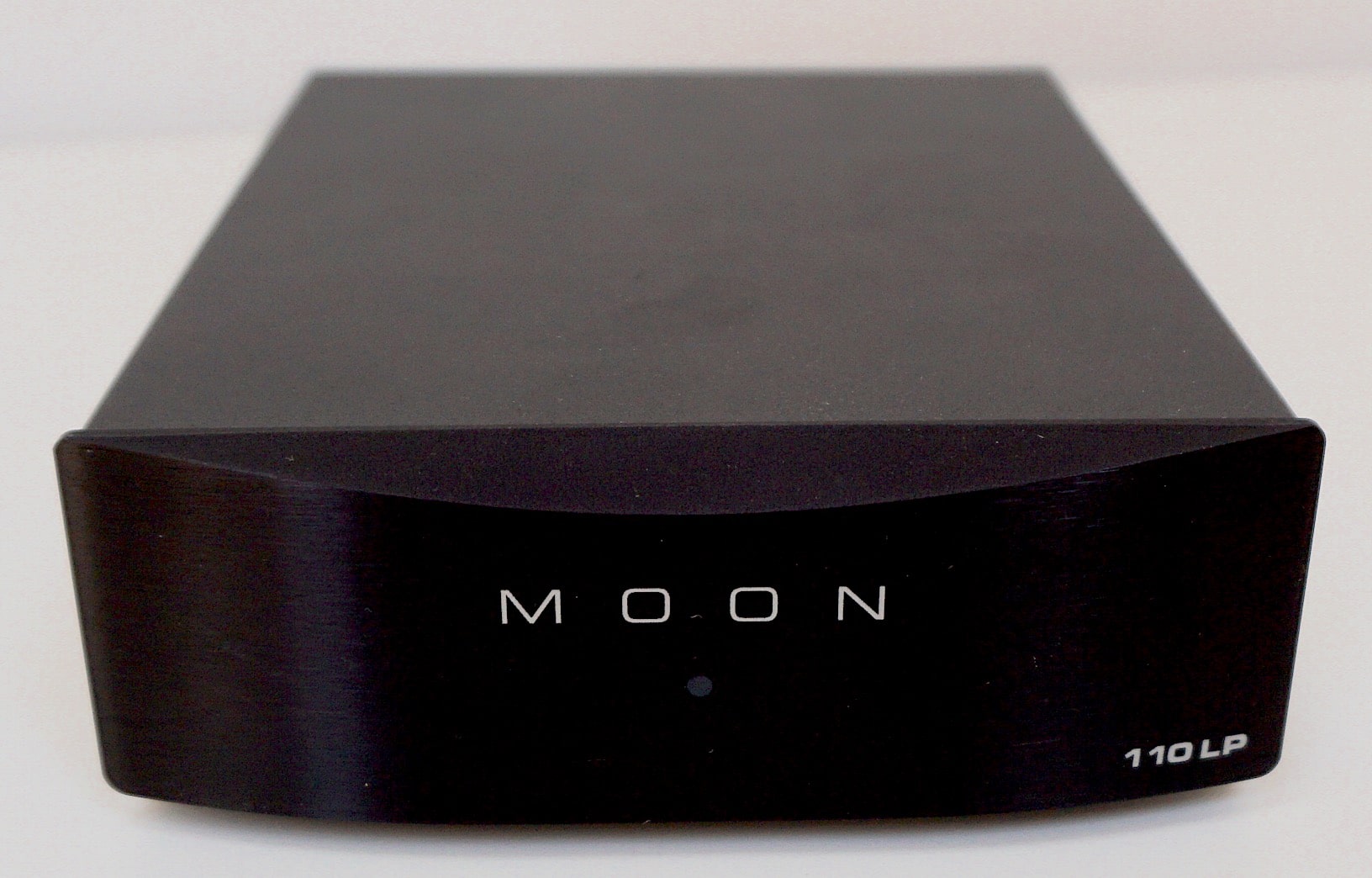



I appreciate there’s approx. £300 difference in price but where does the Schiit Mani compare to this?
I’d go for the Moon.
moon the best of the best that all robert berlin
Hello Paul. How would the Moon compare to the Graham Slee Era Gold V in it’s presentation ?
I haven’t heard one live, I’m afraid Roger although colleagues tell me that it can be on the cool side around the midrange. If that’s the case, then Moon should offer better balance but, as I say, I cannot confirm.
Hi Paul,
Recenyly, I bought a Rega Fono MM MK3, but found it is little disappointing for my Rega P3/Exact combination.
A Fono MM has rich midrange but lose some sparkling in treble and bass area, also weak in transparency.
How would the Moon compare to Rega Fono MM MK3 in overal sense?
I like the Rega, it’s an excellent product but I think I’d plump for the Moon on this occasion. It offers superb value for money and is a bit of a giant killer.
Thank for quick reply.
I think 110lp’s sound nature is very similar to Schiit Mani.
How do you think of this comparison? i.e. 110lp vs. Mani.
Hi Loue – the Moon is superior. Simple as that.
Oh, I am also interested in comparison with TRICHORD DINO MK.3.
^^;
Paul; Just signed up for your news letter Very interested in hearing more from you an the Moon 110 v2 vs the Schiit Mani. Specifically some details on the sound differences. Thank you.
Greg,
Canada
Hi Greg – I’d go for the Moon – although the Mani is excellent for the price. General sound quality, basically.
Hi Paul. How is the moon 110 compare to dynavector p75 mk4? For my rega p3 and Ania cart. I am considering these 2 in comparison to my rega fono mc.
Thanks
You’ve got me there, Adrian – The P75 is very good indeed, I know that. Not sure how it compares to the Moon because I haven’t done a full test or an A-B comparison. The Moon is excellent, I know that but, bottom line? I would probably grab the better deal of the two or the one that you feel most comfortable with.
How does this compare to the Trichord dino Mk3?
The Dino is excellent and, if you did buy this, you wouldn’t be disappointed. In its basic form, though, I’d go for the Moon.
That said, the Dino is designed to be upgradeable in stages by swapping over power supplies, cables, etc. Hence, you have an upgrade path up to around £1,000 in value over time. So it depends on how you want to approach the hardware and how you see your upgrade path. Have you seen my Dino review?
I haven’t yet had a chance read as yet. But will do.
Thanks Paul.
No problem Rich.
Thanks for the review Paul, your writing style is quite entertaining. I read your review and purchased the Moon 110LP. I replaced Schiit Mani. I hit the Mani’s limit. It’s Wonderful phono stage for budget gear, but when paired with Atoll 200 signature and Buchardt s400 I realized the Mani was he weak link in my chain. I’ve had the moon for 1 week now and it completely quieted noise floor. I can listen to my vinyl without the pop and clicks that are present in the Mani. Is it worth the extra $280? It is to me. Anyways, my question is how does it handle MC? I have Nagaoka MP200 (MM) and the sound is fantastic, but I wonder how the Moon will handle an MC like a Dynavector 20x? Will upgrade cart in the near future and I’m wondering to stay in the Nagaoka family (mp500) or move up to MC. Will the moon handle it? Thank you.
Thanks for you kind words Humberto. In a word? Yes.
Great review, Paul. I loved the ending. As always, well-done.
Thanks Joel!
Hi Paul,
Like others i was thinking of trying the mani, however on your review i would try the Moon. But how do you think it compares to Musical Fidelity LX-LPS.
The LX is a lower cost product, Roger and (via casual listening – I haven’t tested it formally) it does well in its lower price slot but the Moon (from such casual listening) appears more capable.